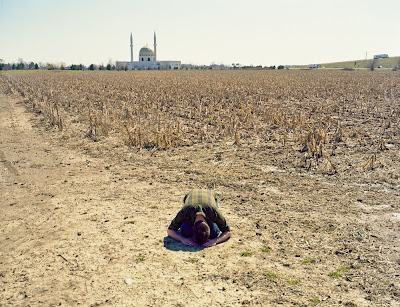Takeshi Moro
Tuesday, 28 April 2009
Work from the series, Pedestal for Apology.
“My work explores the personal and public reconciliation process and how these experiences may be manifested within the experience of art. I am interested in contemplating the accumulated historical weight that each of us inherits in society and that, to a certain extent, defines our identities. At the same time, I am also concerned with the accumulation of our own personal histories and how we negotiate with these experiences in our lives as they weave from past to present.
As a Japanese man born after World War II, I live with the inherited responsibility of the attacks on Pearl Harbor as well as the atrocities that preceded and followed this event. The historical weight of responsibility for these events has been diminished by generations before me, leaving my generation and those that follow to contend with this history. Mirroring the history of the war, I too have accumulated events in my personal life that are characterized by guilt, regret and remorse. I am very conscious of the personal and communal burden, and I attempt to address it in a way that recognizes these issues and also brings a degree of levity and communal activity as well. I hope that my work may make these burdens visible as well as help disperse this cultural weight into our collective and personal histories.
The gesture of bowing, an apology in Japanese culture, is at the heart of my recent “Pedestal for Apology” series. This simple gesture, raised to an iconic level, is meant to frame ideas of humility and forgiveness for whoever takes the opportunity to perform this act, and also whoever witnesses others performing this act. Perceiving this simple gesture of apology is complicated by its very public situation, which may be seen as equally ridiculous or irreverent. By introducing levity into a very sober situation, I hope to diffuse and humanize the burden of this engagement.”



